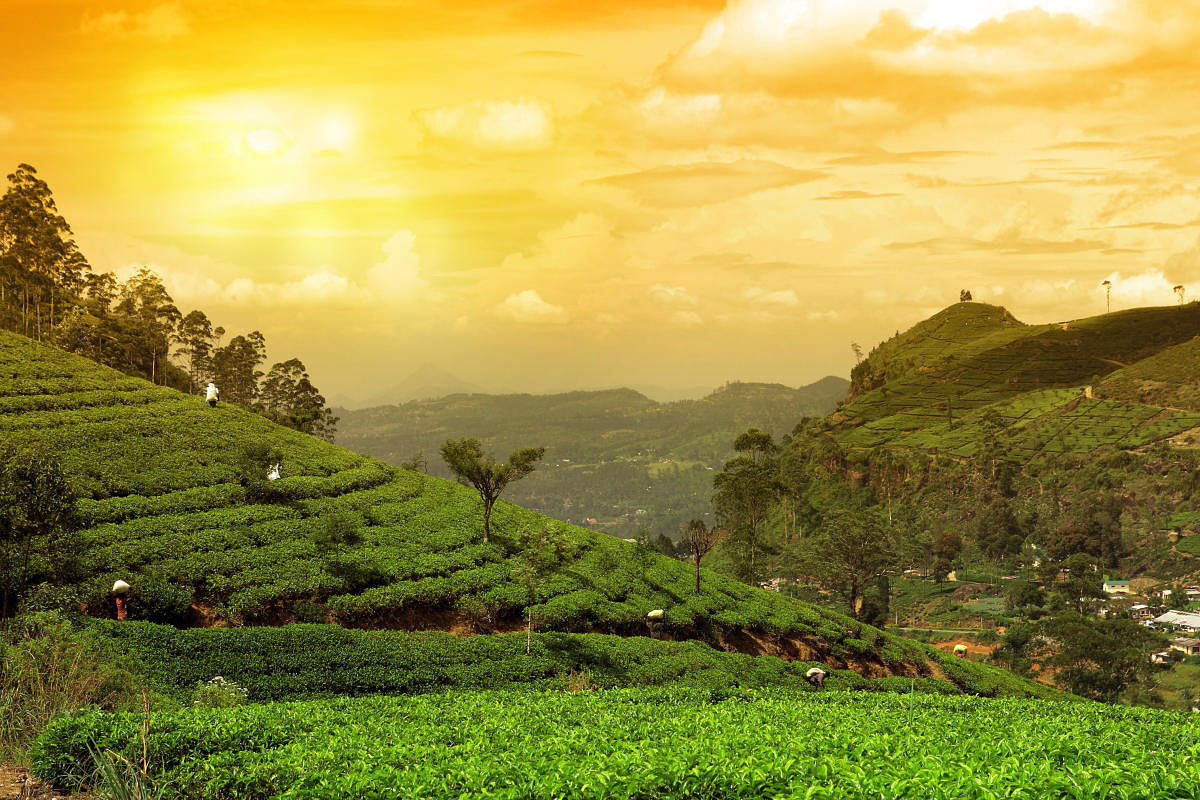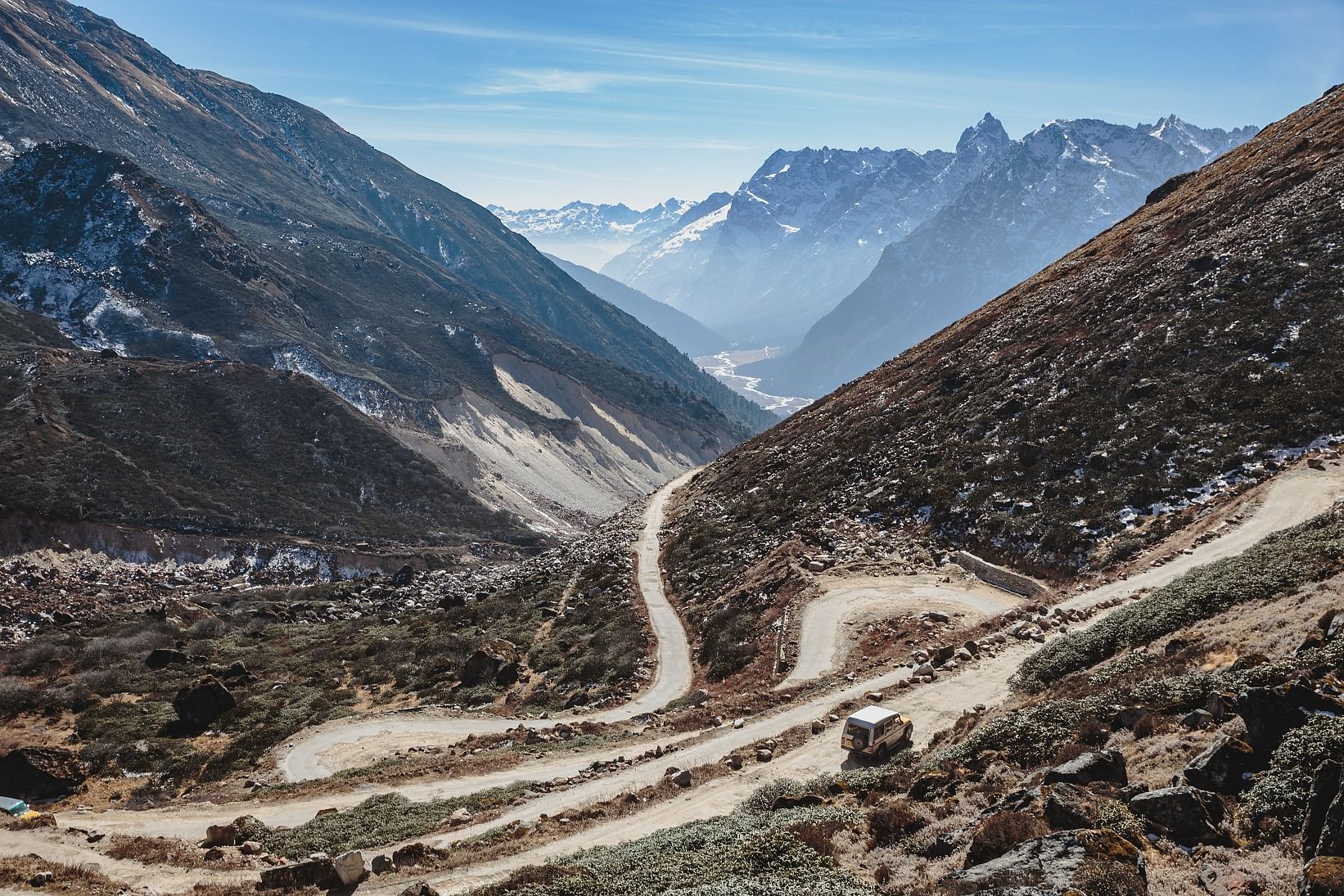
Goodbye to another winter... While the north was reeling under a cold wave, other regions too, experienced some chill as the temperature plummeted to more than the normal after decades.

So, there is a feeling of joy in welcoming the much-awaited spring season. It brings with it a bountiful of soothing sunshine, blooming flowers and luscious fruits. It is the perfect time to visit the hills when the weather is dry and sunny with just the right nip in the air. You could be thrilled as clouds lift to reveal the snowy mountains and the sunrise atop the hills. With a spring in your step, visit these hill stations which are at their charming best between winter and summer months.
Valley of flowers
Go for the orchids, wildflowers and rhododendrons during spring. The Barsey Sanctuary in west Sikkim is fiery with red and soothing with white rhododendrons. Heading north, the Shingba Rhododendron Sanctuary in the Yumthang Valley in North Sikkim transforms into a valley of flowers with rhododendron blossoms. The wildflowers primulas, blue poppy and rhododendrons grow in alpine zone. All along the way from Gangtok, gushing waterfalls and sprouting wildflowers accompany you. The yaks graze in green meadows overlooking the tall pines and fir trees on sloping mountain sides. The rich biodiversity of Sikkim prompted British naturalist Joseph Hooker to record the various flora of Sikkim in his Himalayan Journal way back in mid-19th century.
Sip of freshness
Go to Darjeeling, and adjoining tea gardens of Mirik and Kurseong, to enjoy the first flush of the Darjeeling tea. It is harvested from March, and the tea is less oxidised during processing so the tea is clear light and aromatic. Sit in any tea bar in the mall and sip the first flush of world-famous Darjeeling tea. Enjoy trekking and sightseeing without being burdened with layers of woollens at least during the daytime. The greenery of tea plantations, lively rhododendrons and the cool crisp air and clear sky offers spectacular views of Mount Kanchenjunga. Wake up early in the morning to catch the splendid sunrise from the Tiger Hills.
Scotland of the East
Shillong in Northeast has the loveliest and driest weather during spring. With flowers all around, you could also catch the flower festival during this time. Hailed as the Scotland of the East, situated in the east Khasi Hills, natural beauty abounds in its vicinity. During spring, the sweet smell of pines and pineapple pervade the air. The hills, fertile valleys, torrents of mountain streams, placid lakes and sparkling waterfalls, lend a soothing charm to this hilly town. For music aficionados, the capital city literally rocks as the locals love strumming their guitars, have professional rock bands and the police bazaar there, have classic western albums that you could sometime not find even in metros.
A ‘plum’ posting
Kullu and Manali the apple and plum orchards are in full bloom and the best part is that the surrounding hills still have snow. Although it’s cold, it’s a good time for taking a lesson or two in skiing and enjoying walking in the serene woods around the town. While here, also enjoy the hot springs of Manikaran, trekking in Parvati Valley, eating trout fish, savouring art at Russian painter Roerich’s Naggar or enjoying the snow at Rohtang Pass.
The Valley of flowers in Uttarakhand is one place where you could abandon any worldly thoughts and go trekking through the countryside amidst gorgeous blooming flowers. They look so vibrant and joyful that it could well be flower therapy for a happy mind and soul. The 87 square kilometre area in Chamoli district is covered with natural wildflowers in the backdrop of Zanskar ranges and glaciers. Punctuated with gurgling streams, rivulets, waterfalls and myriad flora, the pristine valley is nature’s wild, untamed creation at its best. It’s been recognised as a UNESCO World Heritage Site.
Draped in white
Srinagar in Kashmir wakes up from its severely cold winter as spring knocks at its door. The stark white landscape covered in snow sighs a relief as snow melts and alpine flowers
emerge in the Kashmir Valley spreading much cheer with its vibrant colours. The meadows turn into flowering gardens as mustard, rapeseed, almond seed blooms. But it is the rows and rows of tulips that steal the show as rainbow appears to descend on the ground. Yellow, red, white dominates the landscape. As they bloom through March to April, a tulip festival is organised at the Indira Gandhi Memorial Tulip garden where 60 varieties of tulips bloom in 30 hectares of land. The tulip covered foothills of Zabarwan range with Dal Lake and the mountains in the backdrop look fetching.
Mythical hills
In Panchmarhi and adjoining Satpura forest in Madhya Pradesh, central India’s hills evoke mythology and history with ancient Shiva caves, temples, churches, colonial bungalows and nature’s bounties of waterfalls, wildlife, gorges and dense forest. For once you could be lost in the pages of Rudyard Kipling’s Jungle book looking for tigers. From Pandavas exile, Buddhist chants to following wild trails of James Forsyth, the British captain who discovered it in 1857, the call of the wild is irresistible. But in spring, nothing is as dazzling as the sight of blooming ‘flame of forest’ (palash or tesu) that set the dry deciduous forest ablaze in red and orange inflorescences. When most trees like teak and sal shed their yellowing leaves, palash blossoms, completely overpowering the forest with its fiery clusters.
Scenic valleys
Munnar in Kerala is a cool hilly town with rolling hills of sprawling tea plantations. The first early spring tea harvest and recent flourish of strawberries in few tea plantations is enough reason to visit Munnar in spring. The weather remains cool and pleasant. Light showers may enhance the experience as mist shrouds the gently sloping hills that appears to be carpeted in bright shade of green. Saunter off on winding walkways and enjoy the scenic valleys. Visit India’s first tea museum there, go for trekking in Eraviculam National park to take in the views of tea plantations thinly veiled in rising mist. Look out for the endangered Nilgiri Tahr and colourful butterflies.
Chug along
Ooty and Coonoor in Tamil Nadu might be crowded during summers but spring sees less crowds and the beauty of its famous Rose garden and Botanical garden reaches its prime during spring as flowers bloom everywhere. Laid out in the year 1848 by the British, the 55 acres garden has varied species of flowers including medicinal plants, flowers, ferns, lilies, ponds and well-manicured lawns. When in town, visit the historic 19th century church, go ambling in its marketplace to bite into the homemade white and rich dark chocolates and simply relax at the scenic lakes that abound.
Absolutely not to be missed is a ride on the 1908 built Nilgiri mountain railway (a 1,000 mm metre gauge railway) to Coonoor to see the tea plantations.